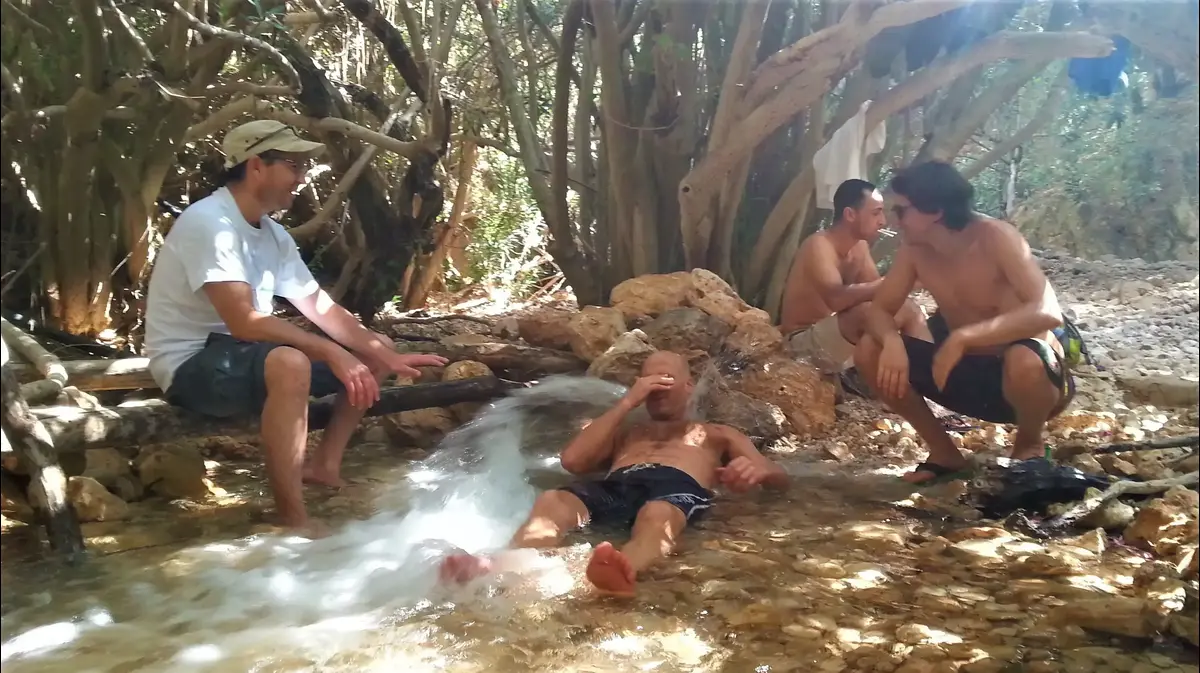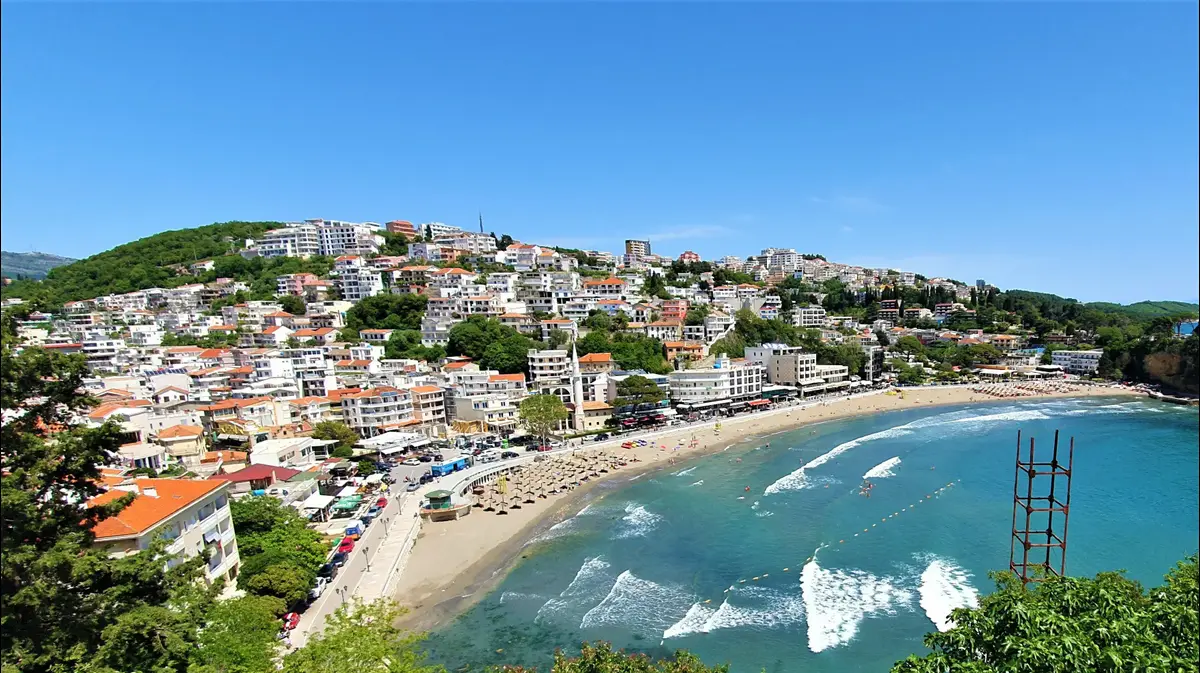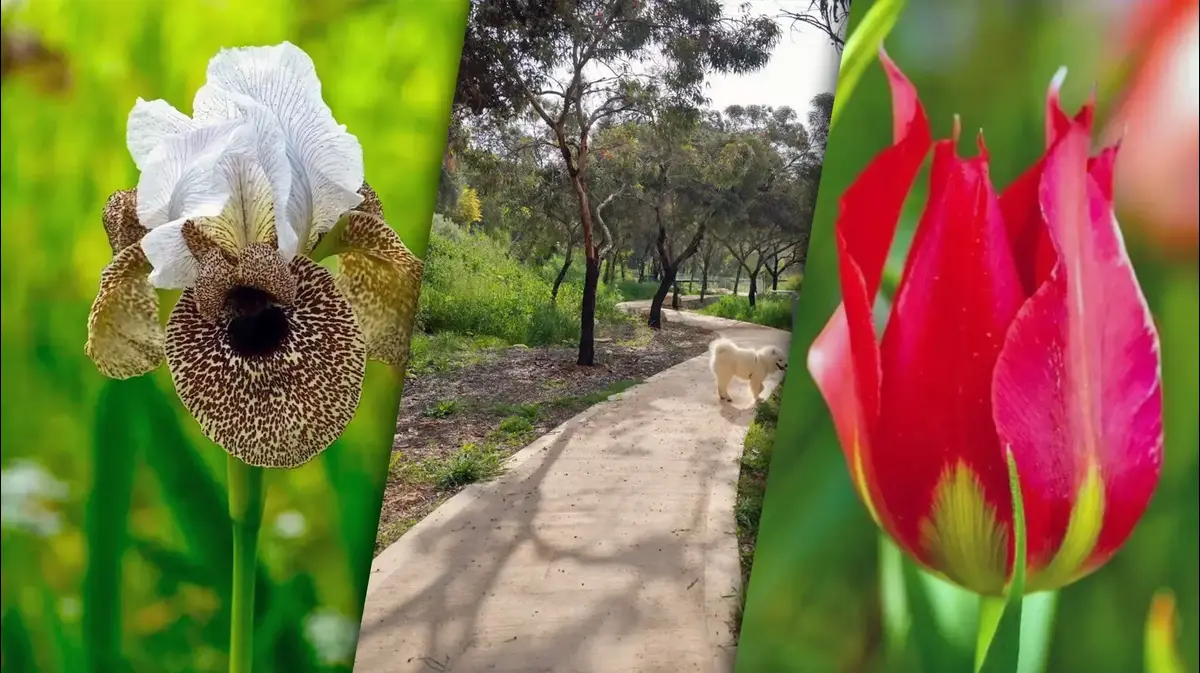This is how the water is going to "return" to the popular stream in the Galilee
Increased pumping of groundwater over the years has led to the almost complete dehydration of the Betzet River in the Western Galilee.
Despite a small water pipe that is artificially infused into it, it is now hoped that a regional desalination plant will restore life to the thirsty Galilee streams and the popular river
Crescent Isaac, Angle
24/05/2022
Tuesday, 24 May 2022, 07:29 Updated: 07:36
Share on Facebook
Share on WhatsApp
Share on Twitter
Share on Email
Share on general
Comments
Comments
Nahal Faram (Photo: Yishai Alef)
Just before the Israeli summer hits us in full force, it's time to pack up the family and some friends and go for a walk in nature.
The water flows in the streams, the beauty of nature along them is breathtaking - and the Betzet River route is without a doubt one of the most popular in the Western Galilee.
The stream channel runs from Moshav Shtula to the east to about two kilometers south of Rosh Hanikra, and is the northernmost stream in Israel that empties into the Mediterranean Sea.
We will start the trip in the "Horbat Danila" parking lot, which is located at the beginning of the Nahal Sherech route (which connects to Nahal Betzet).
Those who start walking in the early morning can take advantage of the place for a short picnic before starting the walk itself.
You can also visit the ruin itself, which is a remnant of a rural settlement from the Roman-Byzantine period.
Oil presses for the production of olive oil on which the locality's economy was based were exposed at the site.
A short path marked in red will take you among the beautiful remains.
In the first hundreds of meters for the blue walk you will see a cistern and other remains of the village.
Later, the road will become even greener with a shady tunnel sloping with vegetation.
About 700 meters into the walk we will reach the entrance of a fern cave.
The cave is a unique attraction for hikers because it has an interesting challenge - a path tens of meters long that includes iron stairs and pegs.
The cave has a bat colony so in order to keep them the entrance to the cave is forbidden during the winter months (November to March).
The walk in the cave is for the well-traveled and must be equipped with flashlights and suitable equipment.
More on Walla!
This is what the most beautiful stream in Israel looks like when you are at home
To the full article
More on Walla!
The Galilee stream with the water that is empty of hikers also on Fridays
3 secret spots in the most sought after streams in the country
Free and refreshing: Water slides in nature that everyone is dying to get to
Want to beat the pain but are afraid of spending it?
B-Cure Laser on trial at an unprecedented price
Try to catch every little drop of water on the trip.
Hikers in Nahal Betzet (Photo: Walla !, Ziv Reinstein)
Stop growing.
Large plane trees in Nahal Betzet (Photo: Walla !, Ziv Reinstein)
The confluence of the streams
After the cave, we will walk down the bus for another 300 meters, to the junction with Nahal Betzet - to the blue-black trail junction, and from there we will continue on the blue route.
After about 500 meters we will reach the "main event" - Einot Karkara and the wet area (depending on the season) of Nahal Betzet.
Note that the water reaches the stream through a pipe (later we will find out why).
Down the creek there are some nice pools where it is advisable to take the opportunity and splash in the water.
Along the way, the vegetation includes huge plane trees and an abundance of haunted shrubs typical of the place.
We will continue on the blue trail to the pumping facility (which we will detail below) and prepare ourselves for a relatively challenging ascent of about 800 meters along the road.
At the end of the ascent we will reach the back gate of Kibbutz Ayalon and immediately after it to the parking lot.
"The route in the streams and swamps is one of the most beautiful and special in the entire Galilee," says guide Omri Avidar from Omri-travel, who specializes in hiking in the Galilee.
"The river has everything from everything: an impressive and interesting Byzantine village, also a walk in a spectacular forest, also the cave which is a great attraction for adventurers and of course - the pools towards the end of the route. A real charm of a place."
How to get there?
You can direct "Wise" to the Horbat Danila parking lot.
It is recommended to arrive in two vehicles and leave one vehicle at the end point at Kibbutz Ayalon (after entering the kibbutz you pass one square, and after 400 meters you reach the hikers' parking lot).
Public transportation:
Lines Line 27 from Nahariya to Shtula or 28 from Nahariya to Matat, the drop-off is at the Granot Hagalil branch.
Return from Kibbutz Ayalon with line 27 from the Ayalon branch and line 28 from the center of the settlement to Nahariya.
More on Walla!
3 secret spots in the most sought after streams in the country
To the full article
"There is everything in the river," including some wading points (Photo: Walla !, Ziv Reinstein)
Release some water to nature, what happened?
Pumping station in Nahal Betzet (Photo: Walla !, Ziv Reinstein system)
Save the creek, and fast
Today's Betzet stream is completely different from the stream that flowed in the same place 25 years ago.
Until the 1990s, the flow in it was constant and continued throughout the year.
However, increased pumping of groundwater, which began in the 1970s in the area of the carriage springs, from the springs that supply the water to the river, led to its almost complete dehydration in the early 2000s.
"A spring is a window to groundwater," explains Dr. Amir Erez, director of the Department of Water and Streams at the Ministry of Environmental Protection
. From those who first identified the problem: "In the early 2000s we saw that the flow in the creek was declining, there were experts who said there were years of drought, so the spring weakened, but we realized that the creek needed to be saved anyway.
Therefore, we asked the Water Authority to receive water artificially through a pipe. "
The artificial flow of water to the river did not fully help, because the amount of water flowed was not equal to that which came from the spring.
In the spring of 2017, Glazman recognized that some of the plane trees typical of the area did not begin to re-grow after the winter.
The conclusion was clear: the trees died as a result of the stream drying up.
"It made us hurry up with laying another pipe to supply more water to the creek," says Glazman.
It is important to emphasize that the pipes, which were laid about four years ago by Mekorot at the request of the Nature and Parks Authority, were only a temporary solution to save the stream.
The water that flowed into the swamp in the pipes came from groundwater pumps in the area.
Did laying the pipes help?
Researchers from the Center for Aquatic Ecology at the Steinhardt Museum of Nature, headed by Dr. Yaron Hershkovitz, tried to answer this question in 2021.
The test results show that the flow of water into the river returned it to function and many oils such as mollusks and crabs, as well as water insects such as Romanesque and tactile, returned to settle there.
In addition, the plane trees that survived the dehydration also began to recover.
The water pools that dried up in Nahal Betzet, 2014 (Photo: Photos by surfers, Hillel Glazman)
A pool in Nahal Betzet that was filled after the discharge from the new pipe in 2018 (Photo: Photos by surfers, Hillel Glazman)
The hope for the river: a desalination plant
In June 2018, the government approved a plan aimed at tackling and stopping the continued deterioration of natural water sources by increasing water desalination and reducing water pumping in the area, leading to the release of groundwater, thus renewing the natural water flow in the river through the springs.
According to the plan, seven streams, including the Betzet River, will be restored "no later than December 31, 2023."
How will this be done?
The government has approved the construction of a desalination plant in the Western Galilee that will connect the entire Galilee to the national water system.
The facility will be built south of Nahariya and will operate from 2025.
Today, the area is cut off from the national water system and therefore the authorities are forced to use local natural resources, such as groundwater in the Betzet River area, to obtain water.
In fact, the desalinated seawater will replace the pumps with drilling to provide drinking water, industry and agriculture, so that groundwater will be able to flow back into the springs as before.
Pipes that flowed water to save Nahal Betzet from 2003 to 2018 (Photo: Photos by surfers, Hillel Glazman)
A desalination plant in the Western Galilee is expected to replace its work.
A pipe that flows water to Nahal Betzet (Photo: Walla !, Ziv Reinstein System)
Nature's right to water
The discussion of stream restoration solutions, both temporary like laying the pipes and permanent like the desalination facility, may leave a fundamental question in the sad story of the swamp: could the drying of the stream have been avoided?
Dr. Amir Erez states yes. "It would have been possible to move a water pipe from the Haifa area to the Western Galilee area, or to establish a desalination plant at an earlier stage."
"We are not talking about huge amounts of water, the balance is such that nature serves us humans," Erez adds.
"Let's think about the State of Israel, where would we be vacationing and hiking if there were no streams? Where would we go? The streams are our basic need ... Between complete drying of a stream for human needs and leaving all the water in the river, there is an informed compromise , And leaving a basic flow that allows for reasonable ecological functioning. "
Beyond the role of streams as leisure and recreation sites, streams play an important role in maintaining biodiversity and an area that serves as an ecological corridor.
The streams, especially in arid areas like Israel, are essential for the functioning of the entire ecosystem around them.
"In the Galilee, agriculture has in the past been given priority over nature, but in the last twenty years there has certainly been a change of direction," Glasman concludes optimistically.
"Nature is part of the national values we preserve for ourselves and for future generations."
The article was prepared by Zavit - the news agency of the Israeli Association of Ecology and Environmental Sciences.
On June 5, a special episode about Nahal Betzet will be broadcast on Nickelodeon Channel in the series "Flowing" (which will later be available for viewing on the Flowing website and on Nickelodeon's YouTube channel).
Tourism
Excursions in the country
Weeks 2022
Tags
Betzet stream
Excursions in the country
Western Galilee









